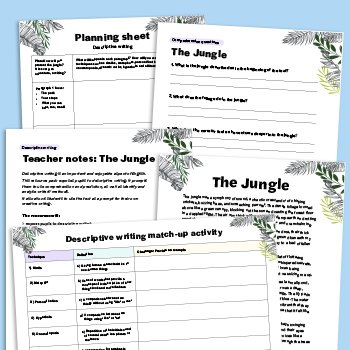How to connect with hard-to-reach students

The process of bringing reluctant learners on board can be tough, especially in these challenging times – but there are some practical approaches you can take, says Hannah Day…

- by Hannah Day
- Head of art, media and film at Ludlow College Visit website

Class sizes are big, time is tight and the demands of new specifications present teachers with regular challenges. It might be tempting to simplify your practice, but now is the time to diversify.
By using the following approaches to get hard to reach students on board, you’ll find yourself saving considerable amounts of time and in the long run.
1 | Consider their approach to the world – not just yours
Sometimes a student will be hard to reach because of the disconnection that there can be between a school’s expectations, and the way many young people think and approach learning.
Find out what’s important to those students, and then find ways of framing the purpose of a task or subject with the objectives that the student will have in mind.
2 | Allow them to do the planning
Explain clearly why you have set a task or project, clarify how it will be assessed and then ask them to consider how they might approach it. This way, hard to reach students can feel more in charge.
This isn’t a perfect approach, by any means – students may well miss important elements in their planning, and will likely require extra supervision, since they’ll be effectively out of sync with the class.
Yet I find that doing often helps move things on from a guaranteed fail, to work upon which you can build. To me, that’s a success.
3 | Use metaphors and fantasy
Children are brilliant at generating fantasies. Play is a key part of learning, and a reliable way in to numerous ideas and concepts, but here’s the rub – according to educationalist John Holt, the fantasies you need are the students’, not your own.
What are they interested in? What do they ‘disappear into’ when they drift off? How can you link these often intense areas of interest into your subject?
4 | Set goals
Watch out for those occasions when what you think is one instruction is, in fact, many. Consider the following: ‘Research and list all the factual information you can find on a book cover.’
It feels like one thing, but isn’t. Now consider this: ‘Pick up a book, look at the front cover, list what you can see, then the spine, now the back cover.’
Many young people will be able to break that sequence of instructions down themselves, but many won’t. Signposting these steps that exist in between goals is vital. Running through tasks yourself first is the best way of checking just how many elements each task you set actually has.
5 | Help them learn by doing
Hard to reach students are often very practical, and usually know more than they let on. What can you get them to show others? What do you know they can do?
This approach will show those students that you believe in them and help build up their confidence, thus making them more likely to try other things.
If their aptitudes are hard to relate to the context of your lesson, consider applying them to the day-to-day running of the school.
Could they demonstrate how a particular item of technology works? This approach links back to Carol Dweck’s Growth Mindset theory – get them believing, and you’ll get them going.
6 | Give them all the praise
Over the last few years, I’ve made a very conscious effort to signpost even the smallest student achievements. ‘Great decision!’ or, after a lot of support, ‘Look what you did! I just helped a bit.’
The more you say, the more confidence they will build, and the more likely they are to take on work for themselves. As the family psychologist Dr Lucy Jo Palladino observes, hard to reach students “Need more acknowledgments and rewards than do other children.”
7 | Work with home
If you’re going to be trying different approaches with a student, their parents ought to know. Explain the reason why you’re taking a different tack and why you think it will lead to positive outcomes, as well as what might go wrong.
In my experience, parents will be pleased at being consulted and knowing that you’re thinking hard about how to best educate their child. They’re usually very supportive, and can often offer nuggets of insight that are really helpful.
I will always stress to parents that we’re on the same team and have the same objective – that of helping their child progress.
That progress may look different to what they might be expecting, and I’ll need to gather feedback as we shape the approach, but we’ll all be jointly cheering this young person on.
Reaching out in lockdown
In recent weeks, the landscape for teachers has shifted dramatically. With that in mind, here are some additional elements to consider when teaching hard to reach students via remote teaching.
First, maintain regular contact with home, and ask them to make you aware of the main issues they’re facing with home schooling. It might be a simple case there not being a printer available, thus requiring the sending out of digitally editable or posted worksheets.
On the other hand, the student or their family might prefer to avoid group teaching in virtual classrooms, in which case you’ll need to set aside time for one-to-one calls.
With years 7 and 8, you might feel that you have some freedom to go off curriculum and devise work for them that will give them useful skills which fall outside the standard content (see point 2 above). Whatever approach you try, stay in contact with home and review as you go. Once they have produced work, ensure that you share their achievements effectively. This links back to point 6 and students’ need for high levels of praise. Many schools are now using their online presences effectively, but getting to that point can take time.
Ask your students to prepare emails that show the work they’ve done, along with a few images and a summary. These can be forwarded to the class without you having to collate anything.
My hope is that teachers recognise the current situation as one that allows for – perhaps even calls for – experimentation with various educational approaches, and an opportunity for us to flex those teaching muscles we rarely get to use.
These are stressful times. I’ve seen a real divide opening up between those students who miss school, and those can’t bear the thought of going back. The fact that the latter group exists should be deeply concerning.
We must use this time to try and reignite their love of learning, before the familiar constraints of curriculum, timetables and general school life start to reassert themselves.
You, reader, are a professional, with so much knowledge and experience to offer; a professional who may have spent years having to follow increasingly narrow guidelines.
In your attempts to engage those hard to reach students, may you find some joy in these times of both restraint and possibilities.
Further Reading
- Carol Dweck, Mindset – Changing The Way You think To Fulfil Your Potential (Robinson, £10.99)
- Lucy Jo Palladino, Dreamers, Discoverers and Dynamos (Random House, £12)
- John Holt, How Children Learn (Da Capo Lifelong Books, £13.99)
Hannah Day is head of visual arts, media and film at Ludlow College










